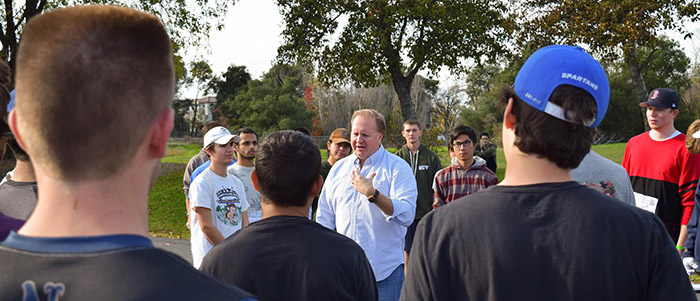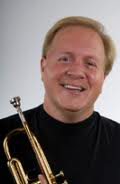
Having a strong show concept can take you far in marching competition, but the ability to make great mid-season adjustments is something that sets the top programs apart. I’d like to share some concepts and strategies designed to help improve show design, while also providing some thoughts on large scale musical approaches throughout the season. My commentary comes from experience as an adjudicator, designer and as one who works with groups to help maximize their overall potential, growth and development over the course of a competitive season.
The Competitive Season
In the marching season, there are basically three phases of competition – early, middle and end. In the early season you are putting the skeleton program on the field and getting students acclimated to the musical and visual demands presented in the written show.
By mid-season, you should have created enough opportunities for feedback and have had more time to flesh out your concepts, coming up with further ways to tie the theme together in a clear and creative manner.
As the end of the season approaches you should be polishing and tweaking the show, making last minute adjustments and setting your performers up to peak at just the right time for championship events.
While all stages of development and growth during the season are important, it is in the middle where adjustments to your program will often affect the most overall positive change. This is the time to step back, re-evaluate your concept and look for new ways to add to it. Ideally, you will have also had opportunities for outside feedback, whether through clinicians or adjudication. This information is important and can go far into helping you continue to develop our show to the next level.
Let’s take a look at the four types of things what you will want to consider at mid-season:
1. Clarifying and Unifying the Program
After picking the original show ideas and living with them for the first month or so, it’s time to leverage feedback to develop show concepts to a new level. Focal points should include reviewing the storyboard (if you have one), developing the theme/concept further, and making the overall concept more clear and readable.
Here are some things to consider in this process:
- Does the theme or concept make sense? Is it easy to follow?
- Are you looking at new ideas and ways to develop the concept?
- Could changes be made musically to enhance the concept?
- Are there changes visually that can be made to enhance the theme?
- Do the members of your program understand the show concept? Do they have a clear idea of how to “sell it” and perform it at the highest level?
As you begin making changes, additions and subtractions may both be valuable and necessary. A great way to unify and highlight a concept is by creating a higher level of integration of all the elements. This could mean highlighting a trumpet soloist with a single dancer, or integrating the entire flag line within a woodwind feature moment, etc.
Looking at new ways to tie in visual, guard and music together can greatly heighten the clarity of your concept. While new ideas can certainly help develop your show, sometimes streamlining and subtracting vague material can be even more beneficial.
For example, if your visual program is too difficult, consider making some adjustments to simplify it. Streamlining can enhance visual clarity and produce better staging and performance of certain of musical phrases.
Sometimes you’ll decide that the musical program is too long or too vague, and needs to be lined up better with major visual effect moments. Finding ways to shorten and tie up thematic clarity can be just as important as cutting parts to merely stay within a judged time limit. At this time your focal points should be to unify and make your concept more clear and readable.
2. Maximizing Effectiveness
By this point, the feedback you’ve received should also provide you with clear ways to help maximize your show from an effect standpoint. If the production is more on the intellectual side, are you still creating enough opportunities for emotional connection? If the show is aesthetically and naturally pleasing, are there still enough moments of sophistication and intellect to appeal to a wider audience?
Sometimes it’s simply a matter of finding a way to further enhance a great musical moment with a better visual idea, or vice-versa.
Remember, we can tell a story just as well visually as we can musically. Be creative and make sure the “t’s are crossed and the i’s are dotted.” Balance of effects is very important and will go a long way in helping to sell your program.
3. Musical and Visual Performance
By mid-season, your basic fundamental routine should be paying dividends in your students’ performance level. Clarity of skills (quality of sound, body control, dynamics, etc.) should be much higher than early season and your focus should be to get your members to do “everything, the same way, and all of the time.”
To help attain this goal, take a second look at streamlining and being more creative with your fundamentals. Playing exercises based on show music rhythms, doing visual exercises with show step sizes, and performing simple playing and moving exercises will be highly beneficial.
Think outside the box. While performance is always an entire season endeavor, finding ways to constantly scrutinize your routine is crucial to the middle and end of the season performances. Referencing my previous Blog “Transferring Skills from Concert to Marching Season,” be creative with these concepts and make them clearly transfer to show type scenarios. Focus on the inherent production challenges that will transfer quickly into next level performance by the students.
4. Rehearsal Structure and Planning For Success
In addition to considering fundamental routine changes, be open to refining your approach to rehearsal planning and structure. Typically, I suggest categorizing rehearsals into macro and micro concepts. Each type is important and finding a good balance between the two can be game changing for your ensemble.
Macro efforts typically focus on large chunk work, singular movement reps, and overall full production run-throughs. The micro details will be focused more on individual phrases, small chunks or specific section and troubleshooting areas.
Early season works well in a general macro setting, as most rehearsals are focused on getting the show on the field, big chunks, and seeing what does and doesn’t work from the outset. Mid-season, however, should find you balancing macro and micro efforts, spending time each week on specific chunks, but also on full production runs.
This is crucial, as students need time to work on details, but also develop the endurance and stamina necessary to make it through an 8-11 minute show and perform at a very high level. In my experience, many groups are very good at micro work, but ultimately have trouble putting it all together in a real performance. This is where attention to the macro effort will make a significant difference.
You can address this by using early and mid-week rehearsals for focusing on small chunks and specific spots. Reserve the end of week (and day of the show) rehearsals for macro level work and full movement runs. Here the focus should be on communication and big picture performance level.
In all, having competitive success usually focuses on two key areas. These are ability and performance level of our performers and the director and/or designer’s ability to make necessary and creative adjustments to the show. While an initial concept can carry you well into the season, the groups that are able to make adjustments, create better design clarity, and prepare their performers to peak at the right time are usually the most successful.
Be open to ANY and ALL suggestions from clinicians, designers, adjudicators and others that have your program’s best interest at heart. A great design is usually a collaborative effort and by creatively finding ways to grow over each season of competition, you will see improved success year to year.
See you on the field!
 Dr. Chip Crotts serves as director of jazz studies and assistant director of bands at the Georgia Institute of Technology. A GRAMMY nominated artist and a Yamaha Performing Artist and Clinician, Crotts has worked with artists such as Ray Charles, The Manhattan Transfer, Natalie Cole, Frankie Valli, The Temptations and Maynard Ferguson.
Dr. Chip Crotts serves as director of jazz studies and assistant director of bands at the Georgia Institute of Technology. A GRAMMY nominated artist and a Yamaha Performing Artist and Clinician, Crotts has worked with artists such as Ray Charles, The Manhattan Transfer, Natalie Cole, Frankie Valli, The Temptations and Maynard Ferguson.
Presently the brass caption manager for the Santa Clara Vanguard, Chip also remains an active adjudicator for several organizations including Bands of America, Drum Corps International and Winter Guard International.
Dr. Crotts received degrees from East Carolina University, Penn State University and a D.M.A. in trumpet performance with a jazz emphasis from the University of Texas at Austin.